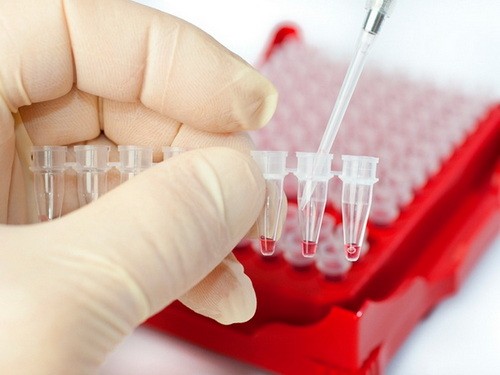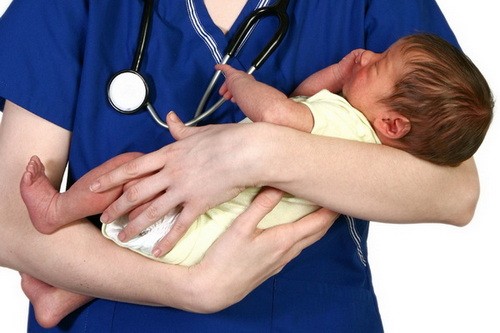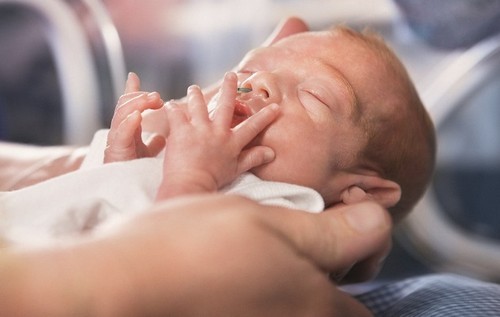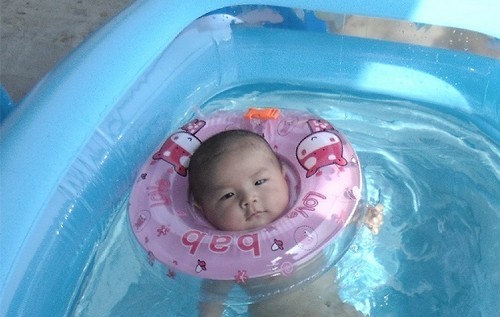The body of a newborn baby is very susceptible to adverse factors. In the first days from the moment of birth, the baby is faced with the phenomenon of physiological jaundice, which is based on increased bilirubin in the newborn in the blood.
This condition does not go beyond the norm if its duration does not exceed 1-2 weeks. If indirect bilirubin is elevated in infants and a discoloration of the skin is observed, many parents experience panic, fearing for the health and life of the child.
This substance is a pigment, the formation of which occurs as a result of the destruction of the protein components of the blood. The pigment has a tan color. As an example, brown halos around bruises on the skin can be highlighted.
What is bilirubin?
The pigment is excreted from the body with feces and urine when exposed to liver enzymes. Bilirubin is present in the human body constantly, in small quantities. If the concentration does not go beyond the physiological norm, then it is not dangerous. If the bilirubin in the newborn has increased, a toxic lesion of the whole body is often formed.

Classification
The substance is divided into a fraction of direct and indirect bilirubin. Indirect bilirubin appears as a result of the breakdown of fetal hemoglobin in newborns. This pigment fraction is not soluble and therefore is not excreted through the digestive system and urinary organs. In the body of a newborn, high hemoglobin and bilirubin are interrelated things.
In order for a substance to leave the body of a child, it must turn into a direct fraction. The transformation of the indirect fraction of bilirubin into a direct one occurs under the influence of liver enzymes. Therefore, if tests have shown that indirect bilirubin in newborns is elevated, parents should urgently take action.
Lack of liver function contributes to low production of enzymes, which increases bilirubin in newborns.
Norms
In a newborn baby, the norm of pigment in the blood is always higher than in a baby from 1 month old. At birth, normal bilirubin levels in the blood do not exceed 60 μmol / L. From the 3rd day of life, the concentration of pigments increases to 205 μmol / L. These indicators are the absolute norm.
If the baby is born prematurely, then normal rates should be no more than 170 μmol / L. When the child is 1 month old, the norm of bilirubin is lowered to indicators from 8.5 to 20.5 μmol / L.

A persistent elevated level of bilirubin in newborns indicates pathology.
Reasons for deviation from the norm
A physiological increase in the level of bilirubin in the blood of a newborn child occurs 3-4 days after the baby is born. As a rule, the cause of increased bilirubin in newborns is the breakdown of fetal hemoglobin. Often there is an increased bilirubin in the baby, leading to serious complications and consequences against the background of toxic damage to the body.
The basis of the pathological type of jaundice is the following conditions:
- Rhesus conflict of mother and child during pregnancy;
- incompatibility of blood groups;
- premature onset of labor;
- minor hemorrhages in the body of the child;
- violation of the outflow of bile;
- infectious diseases in a child;
- digestive system diseases in the baby;
- genetically determined destruction of red blood cells;
- violation of the endocrine system in an infant;
- the use of drugs to stimulate labor;
- violation of the functional state of the liver in a child.

All causes of high bilirubin in a newborn are individual for each child.
You can find out exactly why bilirubin increases in a newborn only at a doctor’s appointment.
Why is this condition dangerous?
A pathological increase in bilirubin in newborns in the blood is dangerous to the health of the child. With a rapid increase in the level of pigment in the blood, its penetration through the blood-brain barrier is observed.
The result of this process is toxic damage to the structures of the central nervous system. In an unfavorable scenario, increased bilirubin in infants causes dementia, oligophrenia, paralysis and deafness.
How to lower bilirubin
If alarming signs are found that indicate an increase in bilirubin in the blood of the newborn, parents are recommended to immediately show the baby to a medical specialist. He will explain what it means if newborns have elevated bilirubin in the blood.
Qualified care for a child with increased bilirubin is to carry out the following activities:
- Phototherapy. The essence of this method is to place the child in a crib, above which is located a source of ultraviolet radiation. Under the influence of radiation, the excess bilirubin is rapidly excreted from the body. Before starting treatment for increased bilirubin in newborns with phototherapy, safety must be remembered. The eyes of the newborn are covered with a special blindfold.
- Infusion therapy. With phototherapy, the children’s body loses a large amount of moisture. The goal of infusion therapy is to replenish lost fluid. For this purpose, the baby is given a glucose solution, soda, membrane stabilizers, as well as drugs that improve microcirculation in the body. A pediatrician is involved in the selection of how to treat increased bilirubin in a newborn.
- Reception of enterosorbents (Enterosgel, Smecta). The goal of therapy is to prevent re-absorption of the pigment into the blood through the intestinal wall.
- In severe cases, the baby is shown a blood transfusion.
The attending physician will tell you how to reduce bilirubin in a newborn.
If a newborn baby has elevated bilirubin in the blood and is breastfed, then a young mother will be recommended to apply it to her breast as often as possible. Mother’s milk contributes to the rapid excretion of toxic pigment from the body.
If we talk about whether bilirubin can again increase in newborns, then this is likely only with the development of pathology.
Preventative measures
Care for how to lower bilirubin in a newborn is necessary even during the gestation of the child. The nutrition and regimen of a pregnant woman affects the future health of the baby. During pregnancy, a woman should monitor her diet. Food should be varied and contain all the necessary nutritional components.
When carrying a child, excessive physical and emotional stress should be avoided. It is also recommended to pay attention to the duration of sleep. The daily duration of sleep of a pregnant woman should be at least 9 hours.
The physiological decrease in bilirubin in newborns occurs with urine and feces, so it is recommended that a young mother take care of the correct feeding regimen for her baby. If the newborn receives mother’s milk, then it is necessary to apply it to the breast as often as possible. With artificial feeding, one should carefully select a milk mixture adapted for the body of a newborn.
Effects
With untimely diagnosis and treatment, the consequences of high bilirubin in a newborn are as follows:
- toxic damage to the structures of the central nervous system (nuclear jaundice);
- mental retardation and oligophrenia;
- cramps and paralysis;
- impaired or total hearing loss.
The cause of pathological jaundice is often anomalies in the development of bile ducts. That is why parents should learn in a timely manner all about lowering bilirubin in a newborn baby. With an increase in pigment level, a way out of the situation is a timely examination with subsequent treatment.
If parents found high bilirubin in the baby, then they are strictly forbidden to resort to self-medication. Such a child needs medical attention. Only a medical specialist will answer the question of why the newborn has high bilirubin against the background of the health of the parents.



